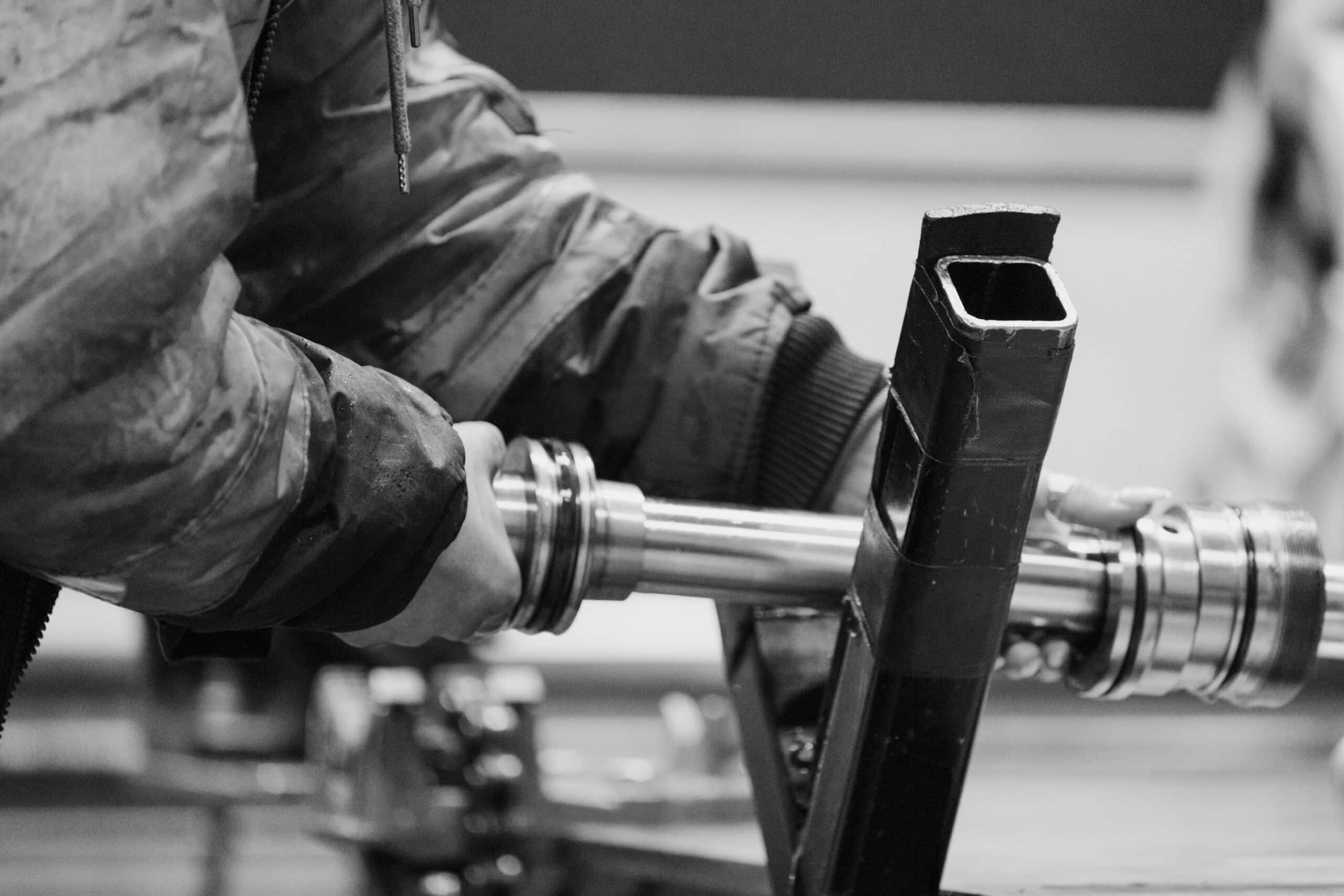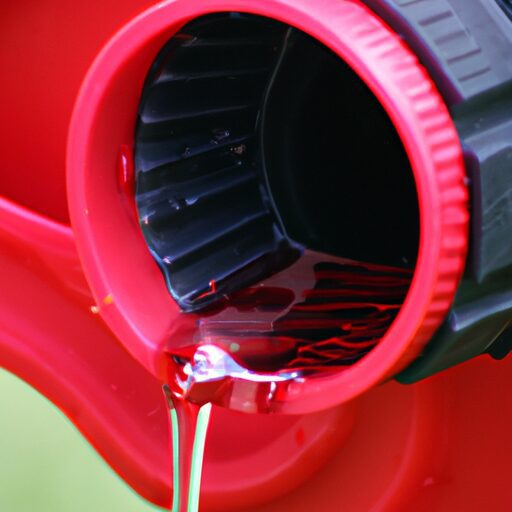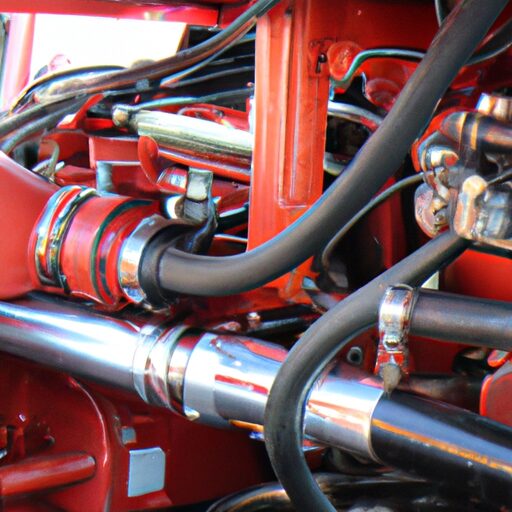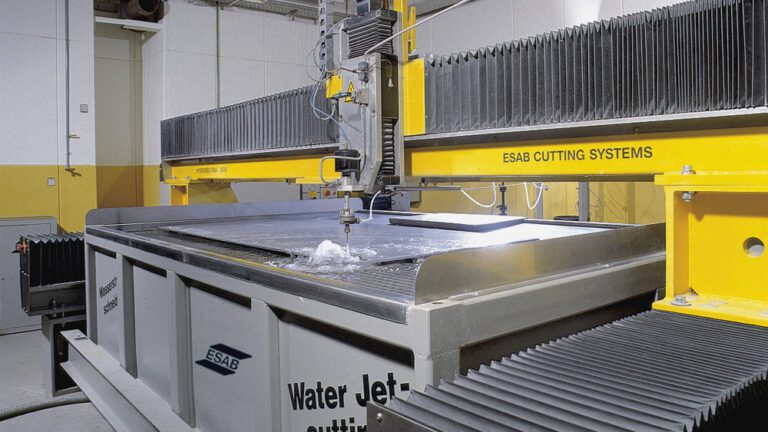Hydraulic Fluid Maintenance: Prolonging Equipment Lifespan With Expert Tips
Hydraulic fluid maintenance is crucial for prolonging the lifespan of equipment. By following expert tips, you can ensure the longevity of your machinery and minimize downtime.
We will explore the importance of hydraulic fluid maintenance and provide actionable tips to help you maintain your equipment effectively.
Choosing The Right Hydraulic Fluid For Your Equipment
Optimize your equipment’s performance and lifespan with expert tips on choosing the right hydraulic fluid. Make the right maintenance decisions to ensure your equipment runs smoothly and efficiently.
Hydraulic systems are critical components of various industrial machinery, and their efficient operation greatly depends on the type of hydraulic fluid used. Selecting the appropriate hydraulic fluid for your equipment is vital to ensure optimal performance, minimize downtime, and extend the lifespan of your machinery.
Here are some important factors to consider when selecting the right hydraulic fluid:
Factors To Consider When Selecting Hydraulic Fluid:
- Equipment Compatibility: Each hydraulic system is designed to work with specific types of hydraulic fluids. It is crucial to consult the equipment manufacturer’s guidelines and recommendations to determine the compatible hydraulic fluid. The wrong fluid can lead to poor performance, increased wear and tear, and potential damage to the system.
- Operating Conditions: The operating conditions in which the equipment will be used play a significant role in determining the ideal hydraulic fluid. Factors such as temperature, pressure, humidity, and contamination levels can significantly impact the fluid’s performance. Ensure that the selected hydraulic fluid is capable of withstanding the anticipated operating conditions to prevent system failures.
- Viscosity: Viscosity refers to the thickness or resistance to flow of a hydraulic fluid. The viscosity requirements vary depending on the equipment design and operating conditions. A fluid with inadequate viscosity may lead to excessive leakage, while a fluid with excessive viscosity can cause sluggish system response. It is crucial to select a hydraulic fluid with the appropriate viscosity grade for your equipment.
- Additive Package: Hydraulic fluids often contain additives that enhance their performance and protect the system components. These additives can include anti-wear agents, anti-foaming agents, rust inhibitors, and oxidation stabilizers. Consider the specific needs of your equipment and consult the manufacturer’s recommendations to determine the necessary additives for your hydraulic fluid.
- Environmental Considerations: When selecting hydraulic fluid, it is essential to consider any environmental regulations or restrictions that apply to your industry or location. Some industries have specific requirements for biodegradable or fire-resistant hydraulic fluids. Adhering to these regulations ensures compliance and protects the environment.
Selecting the right hydraulic fluid for your equipment is a crucial decision that can significantly impact its performance and lifespan. By considering factors such as equipment compatibility, operating conditions, viscosity, additive package, and environmental regulations, you can ensure optimal performance and prolong the lifespan of your hydraulic equipment.
Remember to always consult the manufacturer’s guidelines and recommendations for the best results.
Regularly Monitoring Fluid Levels And Quality
Regularly monitoring the levels and quality of hydraulic fluid is essential for prolonging the lifespan of equipment. By doing so, you can ensure optimal performance and prevent costly repairs. Trust expert tips to maintain fluid levels and quality for reliable and efficient machinery operation.
Hydraulic fluid maintenance is a crucial aspect of equipment upkeep that plays a significant role in prolonging its lifespan. Regularly monitoring fluid levels and quality is a best practice that should be followed by every machinery operator or maintenance personnel.
By adhering to this practice, you can ensure the optimal performance of your hydraulic system and prevent potential damage or breakdowns. In this section, we will explore the importance of checking hydraulic fluid levels and conducting quality testing.
Best Practices For Checking Hydraulic Fluid Levels:
- Perform regular visual inspections of the hydraulic fluid levels in your equipment’s reservoir. Look for any signs of leaks, low levels, or contamination.
- Utilize the dipstick or sight glass provided on the machine to measure the fluid level accurately. Make sure to follow the manufacturer’s guidelines regarding the proper procedure for checking and maintaining fluid levels.
- Maintain the hydraulic fluid level within the recommended operating range. Adding or removing fluid as required will help optimize equipment performance and prevent damage.
- Pay attention to any sudden changes in fluid levels, as this could indicate a potential issue within the system. Promptly investigate and address these changes to avoid more significant problems down the line.
- Document the results of your fluid level checks in a maintenance log. This record will help track trends and patterns over time, allowing for better monitoring and timely action if needed.
Regularly monitoring fluid levels is a simple yet effective practice that can save you from unnecessary equipment downtime and costly repairs. By incorporating this routine into your maintenance schedule, you can catch potential issues early on and address them before they escalate.
Importance Of Fluid Quality Testing:
- Conduct routine fluid quality testing to assess the condition and performance of the hydraulic fluid. This testing helps identify contaminants, degradation, or other factors that could impact the fluid’s effectiveness.
- Analyze the fluid for visible signs of contamination, such as discoloration, particulate matter, or foaming. These indicators can point to problems with filtration, seal integrity, or other aspects of the hydraulic system.
- Utilize specialized testing equipment or send samples to a laboratory for comprehensive analysis. This testing can identify chemical breakdown, viscosity changes, as well as the presence of water or other contaminants.
- Follow the recommended frequency for fluid quality testing as provided by the equipment manufacturer or industry standards. This regular assessment ensures that the hydraulic fluid maintains its optimal state and provides reliable performance.
- Use the results of fluid quality testing to make informed decisions regarding fluid replacement, system maintenance, and contamination prevention measures. Acting on these insights can extend equipment lifespan and improve overall operational efficiency.
By monitoring fluid quality, you can proactively manage potential issues and ensure the hydraulic system operates at its best. Regular testing will help you identify any performance-degrading factors and take appropriate measures to maintain or restore the fluid’s quality.
Remember, regularly monitoring fluid levels and quality is paramount to the longevity and efficient operation of your hydraulic equipment. Incorporating these practices into your maintenance routine can help prevent costly breakdowns, improve equipment performance, and save you valuable time and resources in the long run.
Proper Fluid Filtration And Contamination Control
Proper fluid filtration and contamination control are crucial for maintaining hydraulic systems and prolonging the lifespan of equipment. Expert tips ensure effective hydraulic fluid maintenance, preventing damage and ensuring optimal performance.
Understanding The Role Of Filtration In Fluid Maintenance:
- Filtration plays a crucial role in maintaining the quality and performance of hydraulic fluid. It helps remove solid particles, dirt, and contaminants from the fluid, ensuring smooth and efficient operation of hydraulic equipment.
- By implementing effective filtration practices, you can significantly prolong the lifespan of your equipment and minimize costly repairs and downtime.
- Here are some key points to understand the importance of filtration in fluid maintenance:
- Contaminants in hydraulic fluid can cause wear and tear on various components, leading to decreased equipment efficiency and shortened lifespan.
- Filtration helps prevent the build-up of harmful particles, such as metal shavings, dirt, and moisture, which can clog valves, damage seals, and compromise the overall performance of the system.
- Proper filtration enhances the efficiency of hydraulic systems, allowing them to operate at their optimal performance levels and reducing energy consumption.
Selecting And Maintaining Effective Hydraulic Filters:
- Choosing the right hydraulic filter is crucial to ensure effective contamination control. Here are some considerations to keep in mind:
- Filter rating: Select a filter with the appropriate micron rating, as this determines its ability to capture particles of specific sizes. Consider the system’s requirements and the level of contamination in your operating environment.
- Flow rate: The filter should be able to handle the required flow rate without causing excessive pressure drop, which can reduce system efficiency.
- Compatibility: Ensure that the filter you choose is compatible with the hydraulic fluid and system materials.
- Maintenance: Regularly inspect and replace filters according to manufacturer recommendations. This helps prevent the filters from becoming saturated with contaminants and losing their ability to effectively filter the fluid.
- To maintain effective hydraulic filters, consider the following tips:
- Check filters regularly for signs of clogging, such as increased pressure differentials or reduced flow rates. Replace filters when necessary.
- Follow proper filter installation procedures to prevent leaks and ensure proper functioning.
- Keep filters clean by removing any accumulated dirt or debris during regular maintenance.
- Consider using bypass filters or additional filtering systems for highly sensitive equipment or environments with high contamination levels.
- Properly dispose of used filters, adhering to local regulations and guidelines.
By understanding the role of filtration in fluid maintenance and selecting and maintaining effective hydraulic filters, you can protect your equipment from harmful contaminants and effectively prolong its lifespan. Implementing proper filtration practices is essential for optimal performance and reducing costly repairs in the long run.
So, ensure that you prioritize fluid filtration and contamination control in your hydraulic system maintenance routine.
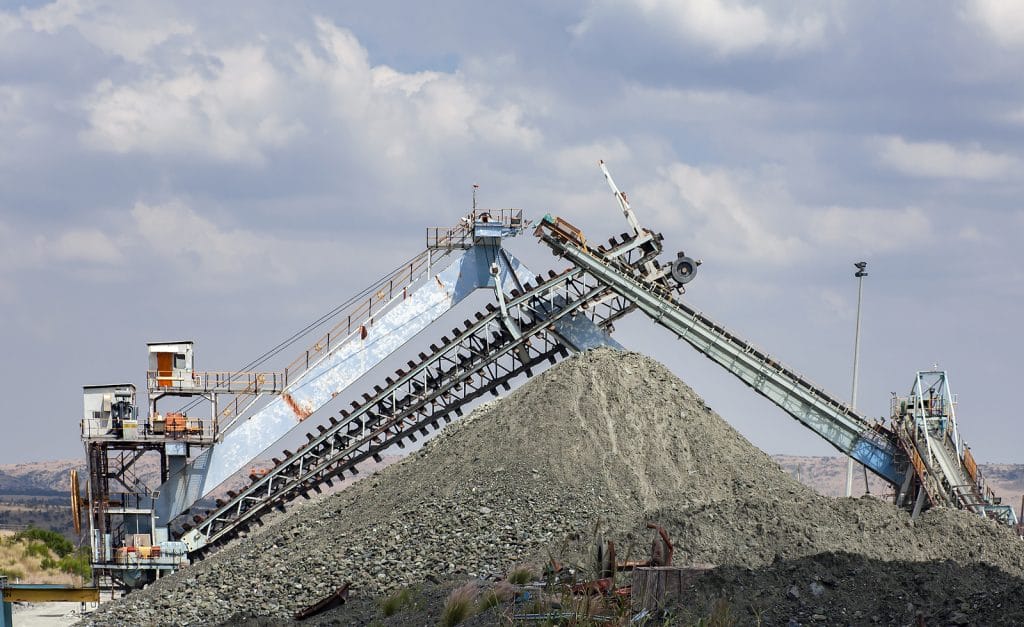
Credit: www.westriverconveyors.com
Flushing And Changing Hydraulic Fluid
Maintaining hydraulic fluid is crucial for prolonging equipment lifespan. Learn expert tips on flushing and changing hydraulic fluid to ensure optimal performance and avoid costly repairs.
Maintaining proper hydraulic fluid is crucial for prolonging the lifespan of your equipment. Flushing and changing hydraulic fluid are two essential maintenance tasks that should not be overlooked. In this section, we will discuss when and how to properly flush hydraulic systems and the recommended frequency for changing hydraulic fluid.
When And How To Properly Flush Hydraulic Systems
Flushing hydraulic systems is necessary in certain situations to remove contaminants and debris that can negatively impact the performance of the equipment. Here are some guidelines for when and how to properly flush hydraulic systems:
- Flushing Frequency:
- After significant system repairs or component replacements.
- When switching to a different type of hydraulic fluid.
- If the hydraulic system becomes contaminated with foreign particles or substances.
- Regularly as a preventative measure, according to the equipment manufacturer’s recommendations.
- Flushing Procedure:
- Start by referring to the equipment manufacturer’s guidelines for specific instructions.
- Ensure all hydraulic power sources are turned off before starting the procedure.
- Drain the existing hydraulic fluid completely using the proper drainage outlet.
- Flush the hydraulic system with a compatible flushing agent, following the manufacturer’s instructions.
- Run the hydraulic system at a low pressure for a specified duration to allow the flushing agent to circulate and dislodge any contaminants.
- Flush the system again with a suitable flushing agent to ensure all residues are removed.
- After flushing, drain the system once again to remove any remaining flushing agent.
- Refill the hydraulic system with fresh, clean hydraulic fluid of the appropriate type and viscosity.
Remember, flushing hydraulic systems should always be done following the manufacturer’s recommendations and guidelines. It is crucial to use compatible flushing agents to avoid any damage or adverse effects on the hydraulic system.
Recommended Frequency For Changing Hydraulic Fluid
Regularly changing hydraulic fluid is an essential part of equipment maintenance. Here are some recommendations for the frequency of changing hydraulic fluid:
- Perform fluid analysis: Regularly conduct fluid analysis to determine the condition and contamination level of the hydraulic fluid. Based on the analysis results, you can determine whether it’s time to change the fluid.
- Equipment usage and conditions: Factors such as the intensity of equipment usage, operating conditions, and environmental factors can influence the frequency of fluid changes. Equipment subjected to heavy loads, high temperatures, or harsh environments may require more frequent fluid changes.
- Manufacturer’s recommendations: Always refer to the equipment manufacturer’s recommendations for the specific hydraulic system. They usually provide guidelines on the ideal frequency for changing the hydraulic fluid.
- General guidelines: As a general rule of thumb, changing hydraulic fluid every 2,000 to 3,000 operating hours or annually, whichever comes first, is a good practice. However, this can vary based on the factors mentioned above.
Regularly changing the hydraulic fluid helps prevent contaminants from accumulating and damaging the equipment. It also ensures optimal performance and extends the lifespan of hydraulic systems.
Now that you have a better understanding of when and how to flush hydraulic systems and the recommended frequency for changing hydraulic fluid, you can implement these expert tips to maintain your equipment effectively. Remember to follow the manufacturer’s guidelines and conduct regular fluid analysis to keep your hydraulic systems in top condition.
Preventing And Managing Common Fluid Contaminants
Discover expert tips for preventing and managing common fluid contaminants with hydraulic fluid maintenance. These valuable insights will help you prolong the lifespan of your equipment effectively.
Hydraulic fluid maintenance is crucial for maximizing the lifespan of your equipment and ensuring optimal performance. By following expert tips and implementing preventive measures, you can prevent and manage common fluid contaminants. In this section, we will explore strategies for preventing water and air contamination, as well as dealing with particulate contamination issues.
Strategies For Preventing Water And Air Contamination:
- Regularly inspect hydraulic fluid reservoirs for signs of water contamination. This can be indicated by a milky appearance or the presence of bubbles. If water is detected, take immediate action to remove it from the system.
- Maintain proper seals on hydraulic components to prevent air contamination. Leaks can introduce air into the system, leading to reduced performance and potential damage. Regularly inspect seals and replace any that show signs of wear or damage.
- Store hydraulic fluid in a clean, dry environment to prevent water absorption. Moisture can contaminate the fluid over time, diminishing its lubricating properties. Use air-tight containers and ensure proper sealing to keep moisture out.
- Implement a desiccant breather system on hydraulic reservoirs. These breathers remove moisture from the incoming air, ensuring that only clean, dry air enters the system. Regularly monitor and replace desiccant as needed.
Dealing With Particulate Contamination Issues:
- Use high-quality filters in your hydraulic system to effectively capture and remove particulate contaminants. Install filters with the appropriate micron rating to suit your equipment’s requirements. Regularly monitor and replace filters to ensure optimal performance.
- Implement effective filtration strategies to remove contaminants from hydraulic fluid. This can include kidney loop filtration systems or offline filtration units. These systems continuously remove contaminants, helping to maintain the cleanliness of the fluid.
- Regularly inspect and clean hydraulic components to remove any buildup of contaminants. Pay close attention to critical components such as valves, cylinders, and pumps. Utilize appropriate cleaning agents and procedures to ensure thorough cleaning without damaging the components.
- Implement proactive maintenance practices such as routine fluid sampling and analysis. Regularly monitoring the condition of your hydraulic fluid can help identify potential particulate contamination issues before they escalate. This allows for timely corrective actions to be taken, preventing equipment damage.
By implementing these strategies and diligently managing hydraulic fluid contaminants, you can significantly prolong the lifespan of your equipment and ensure optimal performance. Regular inspections, proper maintenance, and proactive measures will help keep your hydraulic system running smoothly and reduce the risk of costly repairs or replacements.
Storage And Handling Of Hydraulic Fluid
Ensure the longevity of your hydraulic equipment by properly storing and handling hydraulic fluid. Expert tips on hydraulic fluid maintenance help extend the lifespan of your equipment.
Hydraulic systems play a crucial role in various industrial applications, and proper maintenance is essential for ensuring their longevity and optimal performance. One key aspect of hydraulic fluid maintenance is the storage and handling of the fluids themselves. By storing fluids properly and following safe fluid handling practices, you can significantly prolong the lifespan of your equipment and avoid potential issues.
In this section, we will explore the importance of storing fluids correctly and provide recommendations for safe fluid handling practices.
Storing Fluids Properly To Maintain Performance
Proper storage of hydraulic fluids is essential to maintain their performance and prevent degradation. Here are some key points to keep in mind:
- Choose a cool and dry storage area: Hydraulic fluids are sensitive to temperature and moisture. Select a storage area that is away from direct sunlight and extreme temperatures to prevent deterioration.
- Maintain proper labeling: It’s crucial to clearly label the containers with the type and date of the fluid. This helps prevent mix-ups and ensures that you use the oldest fluid first, following the first-in-first-out (FIFO) principle.
- Avoid contamination: Store hydraulic fluids away from dirt, dust, debris, and chemical contaminants that can compromise their quality. Keep the containers tightly sealed when not in use.
Recommendations For Safe Fluid Handling Practices
To ensure the safety of personnel and equipment, it is essential to follow proper fluid handling practices. Here are some recommendations to keep in mind:
- Wear appropriate personal protective equipment (PPE): When handling hydraulic fluids, it is important to wear gloves, goggles, and protective clothing to prevent skin contact and eye injuries. Always follow the manufacturer’s recommendations for PPE.
- Use dedicated equipment and tools: To avoid cross-contamination and prevent damage to the hydraulic system, use dedicated equipment and tools for handling and transferring fluids. Avoid using containers, funnels, or transfer pumps that have been in contact with other fluids or contaminants.
- Cleanliness is key: Before handling hydraulic fluids, ensure that your hands and any equipment or containers used are clean and free from dirt or contaminants. Contamination can lead to system malfunctions or component failures.
- Dispose of fluids properly: When disposing of used hydraulic fluids, follow local regulations and guidelines. Improper disposal can harm the environment and pose risks to human health.
By paying attention to proper storage and handling practices for hydraulic fluids, you can maximize the lifespan and performance of your equipment. A well-maintained hydraulic system not only leads to smoother operations but also reduces downtime and prevents costly repairs.
Ensure the longevity of your hydraulic equipment by implementing these expert tips for fluid maintenance.
Importance Of Regular Inspections And Maintenance
Regular inspections and maintenance for hydraulic fluid are essential to prolonging the lifespan of equipment. Expert tips and proper maintenance can prevent costly breakdowns, ensure optimal performance, and extend the life of hydraulic systems.
Regular inspections and maintenance are vital for ensuring the longevity and optimal performance of hydraulic equipment. By conducting regular checks and addressing any issues promptly, you can prevent costly repairs and unexpected downtime. Here are some key reasons why regular inspections and maintenance are so important for hydraulic systems:
Inspecting Equipment Components For Any Signs Of Damage
Regular inspections of hydraulic equipment help identify potential issues before they escalate into major problems. When conducting inspections, make sure to thoroughly examine all components for any signs of damage, such as leaks, cracks, or corrosion. Pay special attention to the following:
- Hoses: Check hoses for any signs of wear and tear, including cracks, bulges, or fraying. Replace any damaged hoses immediately to prevent leaks and ensure proper fluid flow.
- Fittings and Connections: Inspect fittings and connections for any leaks, loose connections, or signs of corrosion. Tighten loose fittings and replace damaged ones to maintain a secure and efficient hydraulic system.
- Seals and O-rings: Examine seals and O-rings for signs of wear or damage. Replace any worn-out or damaged seals to prevent fluid leaks and maintain optimal system performance.
- Filters: Regularly inspect and clean or replace filters to ensure proper filtration of hydraulic fluid. Dirty or clogged filters can lead to contamination, reduced performance, and potential damage to system components.
Regular inspections of these components will help you catch and address any issues early on, minimizing the risk of equipment failures and extending the lifespan of your hydraulic system.
Maintenance Tasks To Keep Hydraulic Systems In Peak Condition
In addition to inspections, there are several regular maintenance tasks that play a crucial role in keeping hydraulic systems in peak condition. Here are some essential maintenance tasks you should prioritize:
- Fluid Level and Condition: Regularly check the hydraulic fluid level and monitor its condition. Low fluid levels can cause air to enter the system, leading to reduced performance or damage. Also, monitor the fluid’s color and consistency. If it appears cloudy or contains contaminants, it may be time to flush and replace the fluid.
- Fluid Contamination Control: Implement proper contamination control measures, such as using high-quality filters and maintaining clean storage containers for hydraulic fluid. Contaminated fluid can lead to component wear, reduced efficiency, and system failures.
- Lubrication: Ensure proper lubrication of moving parts to minimize friction and wear. Follow manufacturer recommendations for lubrication intervals and use the recommended lubricants for your equipment.
- System Flushing: Periodically flush the hydraulic system to remove any built-up contaminants or debris. Flushing helps maintain optimal fluid cleanliness and prolongs the lifespan of system components.
- Pressure Checks: Regularly measure and monitor hydraulic system pressure to ensure it operates within the recommended range. Deviations from the optimal pressure can indicate underlying issues that need attention.
- Component Calibration: Calibrate and adjust hydraulic system components as required to maintain accurate and precise operation. This includes valves, sensors, and pressure regulators.
By performing these maintenance tasks on a regular basis, you can proactively address potential issues, optimize system performance, and extend the lifespan of your hydraulic equipment.
Remember, regular inspections and maintenance are essential for ensuring the reliability, efficiency, and longevity of hydraulic systems. By adopting a proactive approach and addressing any issues promptly, you can prevent costly breakdowns and maximize the lifespan of your equipment.
Frequently Asked Questions Of Hydraulic Fluid Maintenance: Prolonging Equipment Lifespan With Expert Tips
What Are 3 Important Maintenance Procedures For Hydraulic Systems?
Regular inspection, proper lubrication, and timely filter replacement are crucial for hydraulic systems’ maintenance.
What Are The List Of Preventive Maintenance Task For A Hydraulic System?
The preventive maintenance tasks for a hydraulic system include regular inspection, filtration maintenance, fluid analysis, and component cleaning.
How Many Years Does Hydraulic Fluid Last?
Hydraulic fluid typically lasts around three to five years under normal operating conditions.
How Do You Maintain Hydraulic Equipment?
To maintain hydraulic equipment: 1. Perform regular inspections to check for leaks or damage. 2. Clean components and filters to ensure proper functioning. 3. Monitor fluid levels and quality, and replace as needed. 4. Follow manufacturer’s guidelines for maintenance and servicing intervals.
Conclusion
Proper maintenance of hydraulic fluid is crucial for prolonging the lifespan of equipment, preventing breakdowns, and reducing overall costs. By following expert tips, you can ensure smooth operation and optimal performance of your hydraulic systems. Regularly monitoring fluid levels, conducting routine inspections, and adhering to recommended change intervals are simple yet effective ways to maintain hydraulic fluid.
Additionally, employing proper filtration and incorporating quality additives can help extend the life of your hydraulic fluid. Remember to store your fluid properly and avoid contamination to keep your equipment running smoothly for years to come. Prioritizing hydraulic fluid maintenance not only enhances the lifespan of your equipment but also increases productivity and minimizes the risk of unexpected downtime.
So, make it a priority to implement these expert tips and you’ll reap the benefits of cost savings, improved performance, and equipment longevity.

